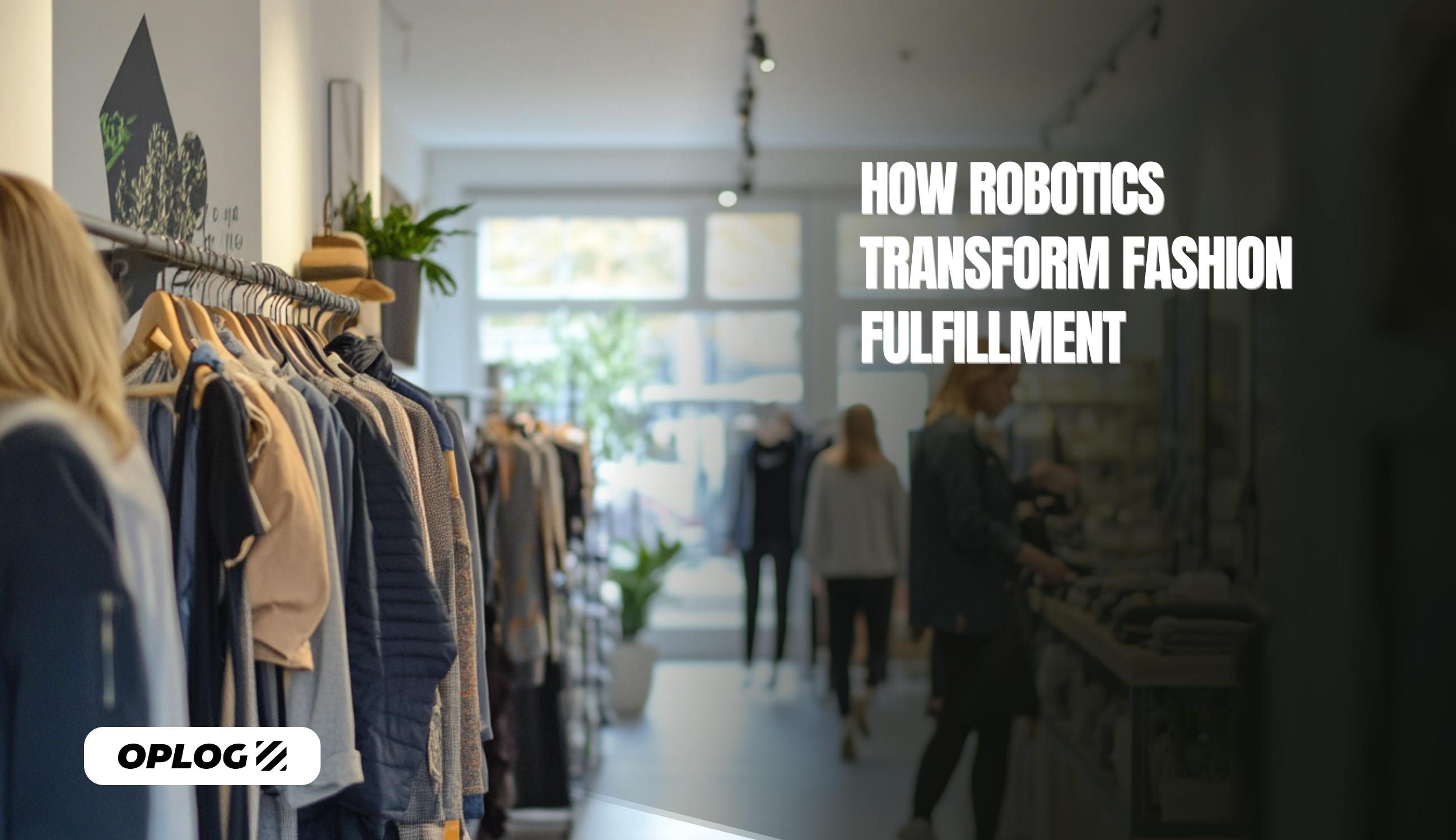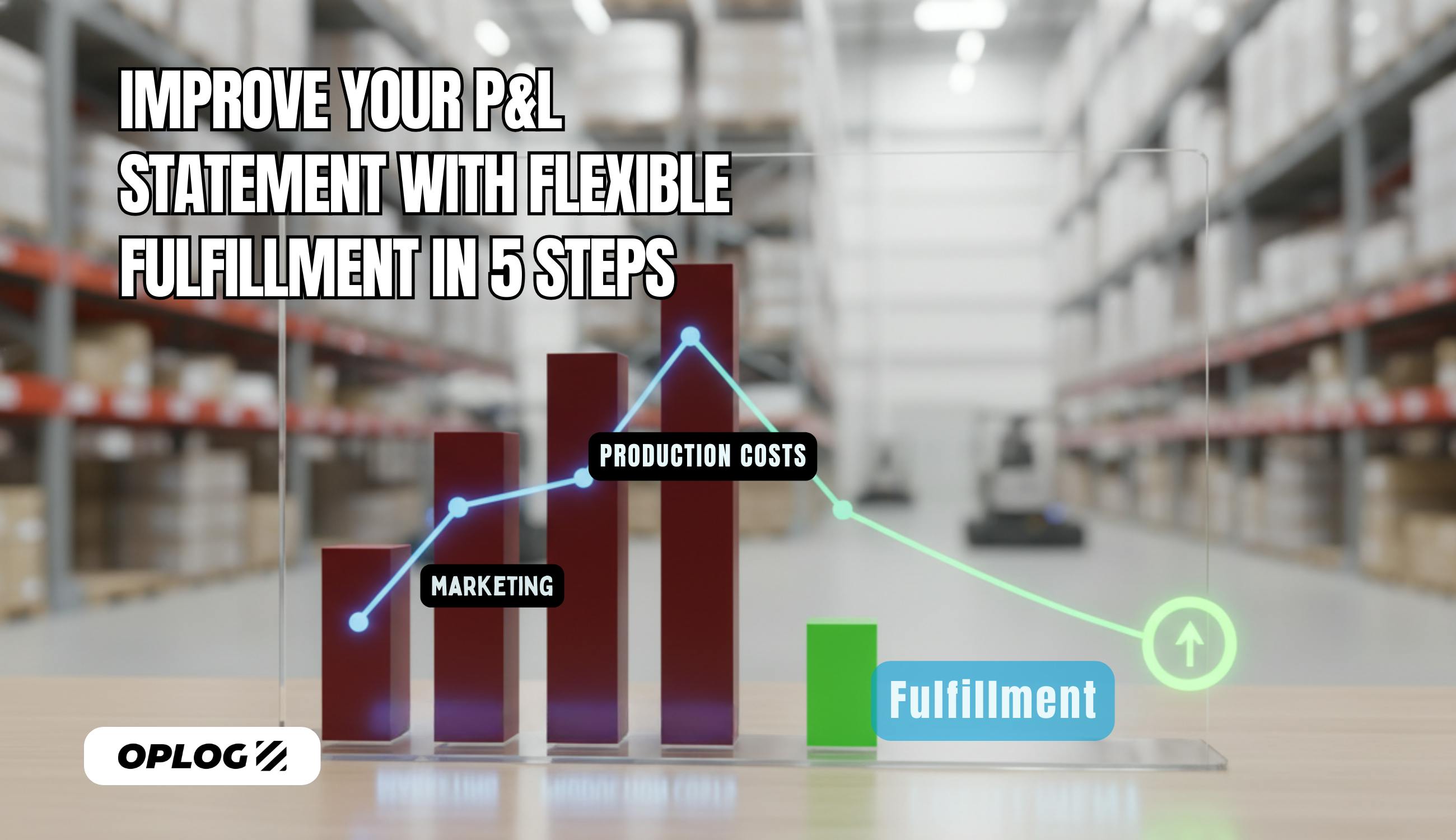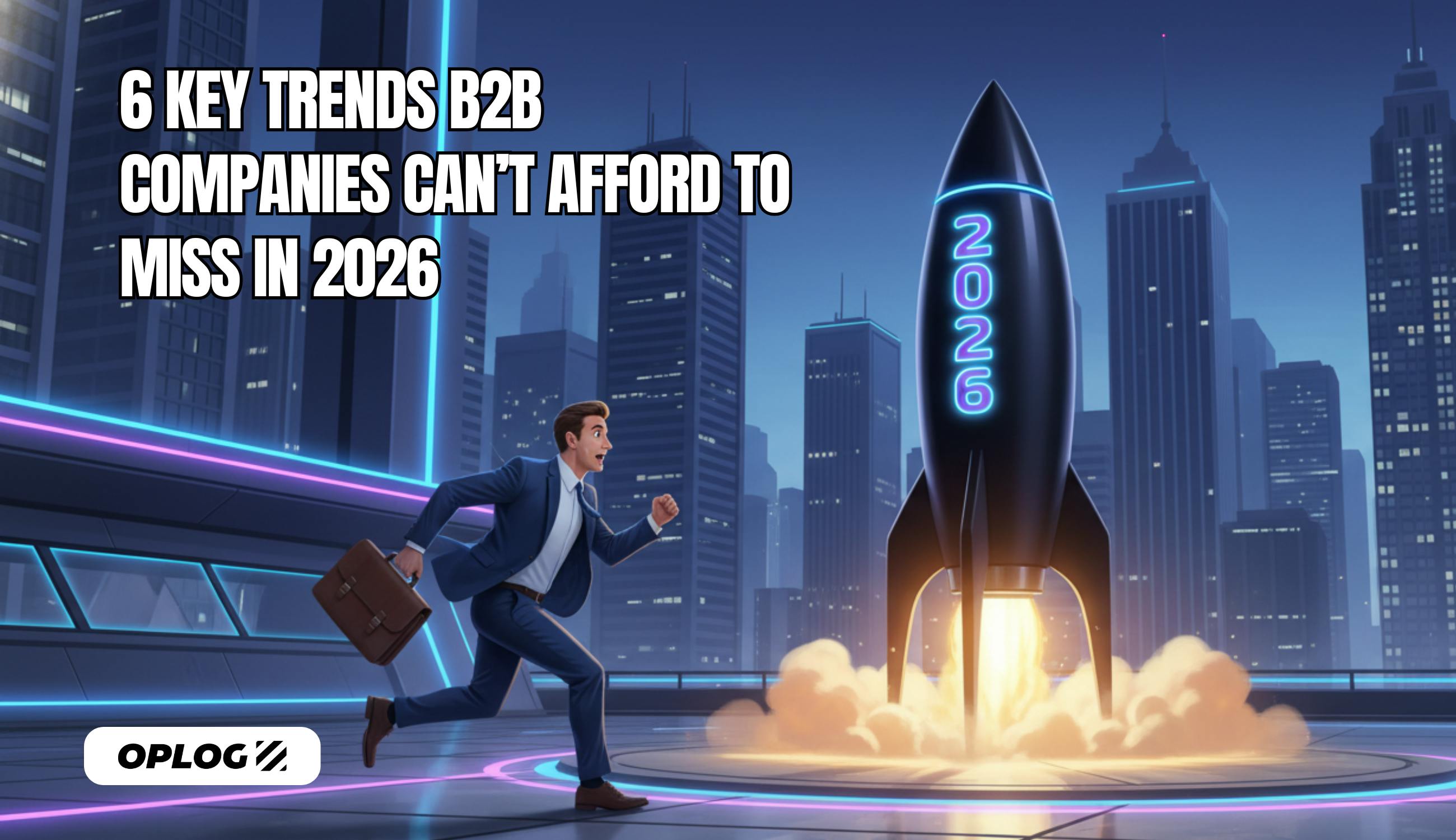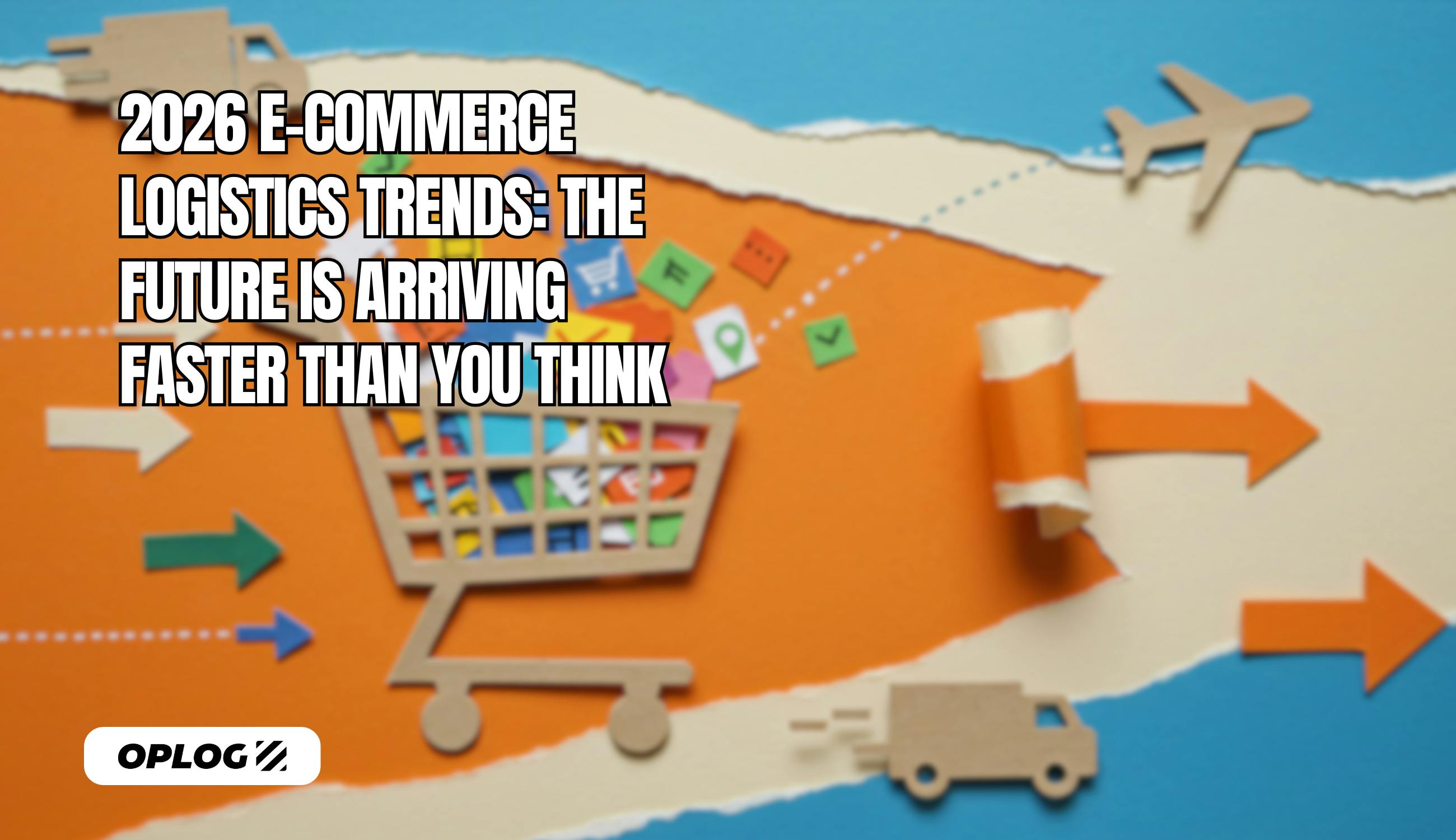The UK fashion sector is evolving at breakneck speed—with rising return rates, social commerce influence, and next-day delivery expectations redefining what customers expect from their shopping experience. While fashion brands scramble to meet these demands, a quiet revolution is happening in warehouses across the UK and Europe: robotics and automation are fundamentally transforming how fashion fulfillment works.
The numbers tell a stark story. Fashion returns in the UK alone cost retailers £27 billion annually, with online fashion returns reaching a staggering 40% compared to just 8.89% for in-store purchases. Meanwhile, 67% of e-commerce customers now check return policies before making a purchase, and 92% would buy again from retailers offering easy returns. This isn't just a cost problem—it's a customer experience crisis that demands innovative solutions.
The Perfect Storm: UK Fashion Fulfillment Challenges
Mobile-First Shopping Dominates
UK consumers have embraced mobile-first shopping with unprecedented enthusiasm. Recent data shows that mobile commerce now accounts for the majority of fashion purchases, with consumers increasingly expecting seamless experiences across all touchpoints. This shift has created new challenges for fashion logistics—mobile shoppers tend to have higher return rates and more complex delivery preferences.
The rise of social commerce adds another layer of complexity. Platforms like TikTok and Instagram have created the "keep or return" trend, where influencers buy fashion items in bulk, try them on for their followers, and then return what doesn't work. Serial returners represent only 11% of shoppers but are responsible for 25% of returns, sending back an average of nearly $1,500 of merchandise each year.
The Returns Management Crisis
Fashion logistics in the UK faces a multi-faceted challenge:
- Fit Issues: 75% of clothing returns are due to sizing problems
- Speed Expectations: Same-day and next-day delivery expectations are intensifying, with mobile commerce growing at 20% annually worldwide and UK consumers increasingly demanding faster fulfillment options.
- Seasonal Spikes: Peak season return volumes can increase by 50% or more
- Inventory Complexity: Fashion brands manage thousands of SKUs across multiple sizes, colors, and styles
The traditional approach to handling these challenges—throwing more human labor at the problem—is no longer sustainable. Warehouse labor shortages, combined with rising operational costs, mean that fashion brands need fundamentally different approaches to fulfillment.
The Robotics Revolution in Fashion Fulfillment
Industry 4.0 Meets Fashion Logistics
The warehouse automation market is experiencing unprecedented growth, with projections showing the sector will reach $115.8 billion by 2034, growing at a 15.9% CAGR. An estimated 4 million warehouse robots are expected to be installed across 50,000 warehouses worldwide by 2025, with 26% of warehouses projected to have automation implemented by 2027.
This automation wave is particularly transformative for fashion fulfillment due to several key innovations:
Autonomous Mobile Robots (AMRs) are revolutionizing picking operations. These intelligent robots can navigate warehouse environments, carrying multiple orders simultaneously and enabling operators to achieve over 350 picks per hour. For fashion retailers managing complex SKU variations, AMRs can handle the intricate requirements of size and color picking while significantly improving order processing efficiency and reducing picking errors.
Automated Storage and Retrieval Systems (AS/RS) maximize storage density while improving picking speed. Fashion retailers, who often struggle with seasonal inventory fluctuations, benefit enormously from AS/RS systems that can dynamically adjust storage configurations based on demand patterns.
AI-Powered Sorting Systems can process thousands of returns per hour, making intelligent routing decisions about whether items should be restocked, recycled, or marked for liquidation. This is crucial for fashion retailers, where returned items lose value quickly due to changing trends.
Real-World Applications Across Europe
The transformation is already happening across European fashion fulfillment centers. At Germany's LogiMAT 2025 (Europe's largest trade show for warehouse and intralogistics), leading companies like OPEX Corporation showcased next-generation automation solutions specifically designed for fashion fulfillment challenges.
Their Infinity AS/RS system offers unparalleled storage density and configurability—perfect for fashion retailers handling micro-fulfillment, omni-channel distribution, and complex inventory management. The wireless iBOT robots can deliver fashion inventory directly to operators with remarkable precision, reducing human error and speeding up order processing.
Meanwhile, companies like Happy Returns (owned by UPS) have deployed robots that sort returned products, cutting labor costs by about 30% and making the return process 50-60% faster. These systems can process thousands of fashion returns per hour while using AI to detect fraudulent returns and analyze return patterns.
How Robotics Improve Customer Experience
Speed and Accuracy at Scale
For fashion brands, robotics deliver customer experience improvements across multiple dimensions:
Faster Order Processing: Robotic systems can handle up to 1,000 picks per hour compared to 250-350 picks by human workers. For fashion retailers, this means next-day delivery becomes economically viable even for complex orders involving multiple sizes or colors.
Improved Accuracy: Robotic picking systems achieve 99.9% accuracy rates, virtually eliminating the wrong-size or wrong-color shipments that drive fashion returns. This precision is crucial when customers are ordering multiple sizes with the intention of keeping only one.
24/7 Operation: Robots don't take breaks or call in sick. Fashion retailers can process orders around the clock, meeting the aggressive delivery expectations of modern consumers.
Returns Management Revolution
The impact on returns management is particularly significant for fashion brands:
Intelligent Returns Processing: Advanced robotics systems can assess returned items in real-time, determining whether they should be immediately restocked, sent for refurbishment, or routed to liquidation channels. This prevents sellable inventory from sitting idle.
Dynamic Inventory Reallocation: AI-powered systems can analyze return patterns and automatically adjust inventory placement across multiple fulfillment centers, ensuring popular sizes and colors are available where demand is highest.
Reduced Processing Times: Automated returns processing systems can deliver up to 50% reduction in returns processing time, while processing returns in stores can save up to 18 days of processing time, improving the chances that items can be resold at full price. This speed is critical for fashion brands where trends change rapidly and items shipped back at the end of a 30-day return window leave little time to process, restock and resell returned goods before the next collection hits the racks.
The OPLOG Advantage: Robot-Native Infrastructure
While many fashion brands struggle with retrofitting automation into existing operations, OPLOG has built its entire fulfillment infrastructure around robot-native design from the ground up. This approach delivers several key advantages for fashion brands:
Flexible, Pay-As-You-Grow Model
OPLOG's Pay-As-You-Go (PAYG) model allows fashion brands to scale their automation investment with their growth. During peak seasons, brands can increase capacity without major capital investments. During slower periods, they only pay for what they use.
This flexibility is crucial for fashion businesses, which experience dramatic seasonal fluctuations and may need to rapidly scale for successful product launches or holiday seasons.
Optimized Returns Management
OPLOG's robot-native infrastructure excels at handling the complex requirements of fashion returns:
- Multi-SKU Processing: Robots can simultaneously handle returns across thousands of fashion SKUs, automatically routing items based on condition, size, and sales velocity
- Quality Assessment: Advanced visual inspection systems can detect wear, damage, or alterations that might make items unsuitable for resale
- Rapid Restocking: Items cleared for resale can be back in inventory within hours rather than days
Precision at Every Step
Fashion fulfillment demands precision—wrong sizes, colors, or styles create immediate customer dissatisfaction. OPLOG's automation systems deliver the accuracy fashion brands need:
- 99.9% Picking Accuracy: Eliminates the sizing and color errors that drive fashion returns
- Real-Time Inventory Tracking: Prevents overselling of popular items and sizes
- Predictive Analytics: AI systems analyze purchasing patterns to optimize inventory placement and reduce shipping times
Customer success story: Fashion brand case study showing measurable improvements in delivery time, return processing, and customer satisfaction scores
Future Trends: What's Coming Next
2025 and Beyond
The next wave of fashion fulfillment innovation will focus on several key areas:
Micro-Fulfillment Centers: Fashion retailers are establishing smaller, automated fulfillment centers closer to urban consumers. These facilities, powered by compact robotic systems, enable same-day delivery for fashion items while reducing shipping costs.
Predictive Returns Management: AI systems are becoming sophisticated enough to predict which items are likely to be returned based on customer behavior, seasonal trends, and product characteristics. This allows proactive inventory management and more accurate demand forecasting.
Circular Fashion Logistics: Automation is enabling more sophisticated approaches to fashion sustainability. Robots can sort returned items for resale, refurbishment, recycling, or upcycling with much greater precision than human workers.
Cross-Border Efficiency: European fashion brands are using automation to streamline international fulfillment, with systems that can handle complex customs requirements, multi-currency pricing, and regional compliance needs.
Visual representation of robotics impact on fashion fulfillment metrics: processing speed, accuracy rates, return times, and customer satisfaction scores
Making the Strategic Shift
For Fashion Brands: Key Considerations
Fashion brands evaluating robotics and automation should consider several strategic factors:
Start with Pain Points: Focus automation investments on the areas causing the most customer friction—typically picking accuracy, return processing speed, and inventory availability.
Scale Gradually: Begin with core automation capabilities and expand based on results. The most successful implementations start focused and scale strategically.
Partner with Experts: Working with fulfillment partners like OPLOG, who have already invested in robot-native infrastructure, can provide immediate access to advanced capabilities without the complexity of building in-house.
Measure Customer Impact: Track metrics that directly relate to customer experience—order accuracy, delivery speed, return processing time, and inventory availability.
The Competitive Advantage
Fashion brands that embrace robotics-powered fulfillment are creating sustainable competitive advantages:
- Cost Leadership: Reduced labor costs and improved efficiency create margin advantages
- Service Excellence: Faster, more accurate fulfillment improves customer satisfaction and loyalty
- Scalability: Automated systems can handle growth without proportional increases in complexity or cost
- Sustainability: Efficient operations and improved returns management support environmental goals
Ready to Transform Your Fashion Fulfillment?
The robotics revolution in fashion fulfillment isn't coming—it's here. OPLOG's robot-native infrastructure is already helping UK fashion brands master logistics complexity, from SKU-rich inventory management to peak season fulfillment challenges.
Our approach combines:
- Advanced robotics for precision and speed
- Flexible PAYG pricing that scales with your business
- Optimized returns management that turns challenges into competitive advantages
- Proven expertise in fashion logistics complexity
The UK fashion sector's evolution demands more than traditional solutions. Rising return rates, mobile-first shopping behaviors, and next-day delivery expectations require the precision, speed, and scalability that only robotics-powered fulfillment can provide.
Fashion brands that embrace this transformation early will build sustainable competitive advantages. Those that wait risk being left behind by more agile competitors who have already made the shift to automated, intelligence-driven fulfillment operations.
The question isn't whether robotics will transform fashion fulfillment—it's whether your brand will be leading the transformation or racing to catch up.






